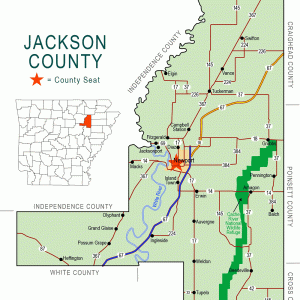calsfoundation@cals.org
Diaz (Jackson County)
|
Latitude and Longitude: |
|
|
Elevation: |
233 feet |
|
Area: |
5.97 square miles (2020 Census) |
|
Population: |
1,224 (2020 Census) |
|
Incorporation Date: |
November 19, 1956 |
Historical Population as per the U.S. Census:
|
1810 |
1820 |
1830 |
1840 |
1850 |
1860 |
1870 |
1880 |
1890 |
1900 |
|
– |
– |
– |
– |
– |
– |
– |
– |
– |
– |
|
1910 |
1920 |
1930 |
1940 |
1950 |
1960 |
1970 |
1980 |
1990 |
2000 |
|
– |
– |
– |
– |
– |
348 |
283 |
1,192 |
1,363 |
1,284 |
|
2010 |
2020 |
|
|
|
|
|
|
|
|
|
1,318 |
1,224 |
|
|
|
|
|
|
|
|
The city of Diaz, created by the railroad industry in the late nineteenth century, is just north of Newport (Jackson County) about halfway between Jacksonport State Park and the Newport Municipal Airport. It is bypassed by Highway 67 (the Rock ’n’ Roll Highway) but connects with Highway 367 as well as several state highways.
Jacksonport (Jackson County), and later Newport, were important cities built along the White River, but the area that became Diaz was first cleared for farmland. Some residents referred to the incipient community of farmers as Shiloh. Elijah Blansett and George Sink were the first landowners to settle there, shortly before the Civil War began. They were soon joined by several other families, including that of William F. Cox. A Baptist church was built, with James L. Blansett of the Arkansas Baptist State Convention ordained as the congregation’s minister in 1873. This church was used as one of three schoolhouses in School District Number 7 of Jackson County. In 1879, James Robinson sold the school district an acre of land on which it built a school for African Americans.
William Cox died in 1879, and in 1882 his widow, Caroline, sold fifteen acres of the family land to the St. Louis, Iron Mountain and Southern Railway (formerly the Cairo and Fulton Railroad) for a railway station. Several railroad workers boarded with farm families of the area as they worked to extend the railroad to Batesville (Independence County). This station was named for Jackson County resident Joseph Dyas, one of the first conductors on the railroad. The reason the spelling of the station was altered to Diaz has not been recorded. Robert West owned land near the station and transferred his store from Jacksonport to Diaz; in 1891, he built the first cotton gin in Diaz. He replaced it with a new gin in 1894 when the first gin was destroyed by fire. A congregation of the Christian Church (Church of Christ)—a forerunner of the United Church of Christ—was started in the 1880s. This congregation continued to use the name Shiloh rather than Dyas or Diaz.
The actual city of Diaz was platted in 1901. At this time, it included 300 residents, several grocery stores and mercantile establishments, and a livery stable, as well as the railroad depot and the two churches. The Wilmans Mercantile Company was established at the site of West’s first cotton gin in 1906. A post office was established in 1916. It was discontinued in 1925 but then reestablished in 1927. Diaz had two newspapers: theTimes, which began publishing in 1918, and theRural News Dispatch, which began the next year and changed its name to theWeekly Enterprisein 1920. Additional Baptist churches were established, as well as an African Methodist Episcopal (AME) church and a Presbyterian church, both of which were destroyed by a tornado in 1929. The community prospered during the early years of the twentieth century, but like other railroad towns in farming areas, it languished during the years of the Great Depression.
The city of Diaz remained unincorporated until 1956. Following incorporation, the citizens elected Sarah Emma West Hurley as their first mayor. She had been born in 1878 and was proudly advertised as the “oldest woman mayor in Arkansas,” serving until her death in 1963. The population of Diaz declined between 1960 and 1970. This trend was reversed in the following decade as the city annexed additional land, doubling its acreage and boosting the population beyond 1,000 residents. A municipal building was dedicated in 1973.
Both before and after incorporation, the community of Diaz has been overshadowed by Newport, the county seat and Diaz’s neighbor to the south. When the U.S. Army selected land in Jackson County for a training air field in 1942, it named the air field for Newport rather than for the nearer Diaz. Likewise, the two-year college located on part of the old airfield is designated Arkansas State University–Newport. The businesses and restaurants along Highway 367 all report Newport addresses. The city of Diaz is part of the Newport School District. One of the chief landmarks in Diaz is the Shiloh Cemetery.
The population of Diaz in 2010 was 1,318, including 839 white, 406 African American, and forty-eight Hispanic residents.
For additional information:
Gregory, Mildred Minor. “History of Diaz after 1900.” Stream of History 13 (January 1975): 23–29.
Morgan, James Logan. “Early History of Diaz.” Stream of History 13 (January 1975): 17–22, 29.
Steven Teske
Butler Center for Arkansas Studies
 Jackson County Map
Jackson County Map 



Comments
No comments on this entry yet.